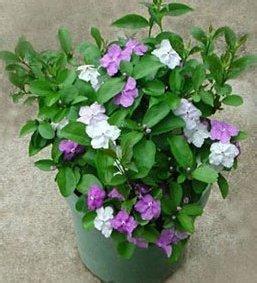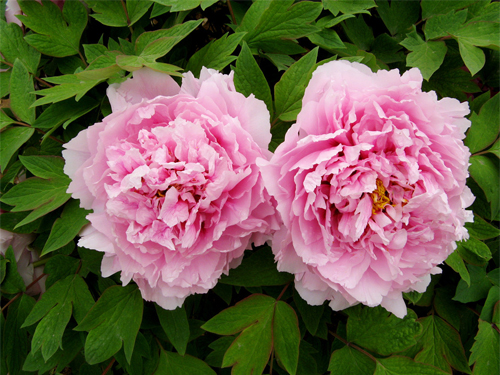How to raise Carnation Flower
The carnation is one of the traditional famous flowers in China. Many flower friends want to raise it, but they often have the heart to raise it, but they can't raise it well. So how to raise the carnation flower? this article tells you how to raise the carnation flower from the most basic starting point. Let's take a look at the method of raising the carnation flower.
1. The basic information of Carnation Flower:
Carnation is a perennial herb, but it is cultivated every year. It sows in autumn in the north and blossoms in spring. Spring sows in the south and blossoms in summer and autumn. The plant height is 30-40 cm, the flower color is purple, bright red, pink, purple, pure white, red, variegated, single or double, apex serrated, slightly fragrant, florescence April-October, concentrated in April-May.

There are many species of carnation, with more than 300 species of the same genus. The common cultivated varieties are bract carnation, colorful carnation, Jintuan carnation, Changxia carnation, dwarf carnation and pinnate carnation and so on. In addition, there is a variety of carnation introduced from Europe, which is called carnation, and the yellow one is more expensive.
How to raise Carnation Flower
2. Maintenance of carnation potted plants:
The suitable temperature for the growth of potted carnation flowers is 15-20 degrees Celsius. In winter, the temperature should be kept above 12 degrees Celsius in the greenhouse. The growing period requires sufficient light, placed in a sunny place, and it is appropriate to scatter light in summer to avoid hot sun exposure. When the temperature is high, it should be shaded and cooled down. Require fertile, loose, good drainage and calcareous loam or sandy loam, avoid waterlogging, good fertilizer. It is required to apply sufficient base fertilizer, 2-3 plants per pot. When the seedling grows to 15 cm high, it is necessary to remove the terminal bud and promote its branching. Later, pay attention to the proper removal of axillary buds, otherwise there are more branches, which will disperse nutrients and bloom small. Proper removal of axillary buds to concentrate nutrients can make the flowers large and colorful.
During the growth period, the potted carnation should be maintained in a sunny and well-ventilated place, keep the basin soil moist, and apply a secondary mature thin liquid fertilizer every 10 days or so. There are too many Rain Water in summer, pay attention to drainage and loosen the soil. Some leaf axillary buds should be removed in time before flowering, mainly to ensure that the top buds bloom. It is advisable to water less in winter, such as keeping the temperature at 5-8 degrees, blooming continuously in winter and spring.
3. Carnation propagation: Carnation is commonly used for sowing, cutting and ramet propagation.
How to raise carnation flowers is one of the traditional Chinese famous flowers. Many flower friends want to raise them, but they often have the heart to raise them, but they can't raise them well. So how to raise carnation flowers? this article tells you how to raise carnation flowers from the most basic starting point. Let's take a look at the cultivation methods of carnation flowers. 1. The basic information of carnation flower: Carnation flower is a perennial herb, but it is generally cultivated for one or two years. It sows in autumn in the north and blossoms in spring. Spring sows in the south and blossoms in summer and autumn. The plant height is 30-40 cm, the flower color has purple red, bright red, pink, purple red, pure white, red, variegated, single or double, apex serrated, slightly fragrant, florescence April-October, concentrated in April-May. There are many species of carnation, with more than 300 species of the same genus. The common cultivated varieties are bract carnation, colorful carnation, Jintuan carnation, Changxia carnation, dwarf carnation and pinnate carnation and so on. In addition, there is a variety introduced from Europe called carnation, also known as carnation, yellow is more expensive. 2. Pot maintenance of carnation flowers: the suitable temperature for the growth of potted carnation flowers is 15-20 ℃. In winter, the temperature should be kept above 12 ℃ in the greenhouse. The growing period requires sufficient light, placed in a sunny place, and it is appropriate to scatter light in summer to avoid hot sun exposure. When the temperature is high, it should be shaded and cooled down. Require fertile, loose, good drainage and calcareous loam or sandy loam, avoid waterlogging, good fertilizer. It is required to apply sufficient base fertilizer, 2-3 plants per pot. Seedlings grow to 15 cm high, to remove the terminal bud, promote its branches, and then pay attention to remove axillary buds properly, otherwise more branches, will make nutrients disperse and bloom small, appropriate removal of axillary buds to make nutrients concentrated, can promote flowers large and colorful. During the growth period, the potted carnation should be maintained in a sunny and well-ventilated place to keep the basin soil moist and apply mature thin liquid fertilizer every 10 days or so. There are too many Rain Water in summer, pay attention to drainage and loosen the soil. Some leaf axillary buds should be removed in time before flowering, mainly to ensure that the top buds bloom. It is advisable to water less in winter, such as keeping the temperature at 5-8 degrees, blooming continuously in winter and spring. 3. Carnation propagation: Carnation is commonly used for sowing, cutting and ramet propagation. How to raise Carnation Flowers
Carnation flower, also known as Luoyang flower and stone pillar flower, is a herb of Caryophyllaceae, which is named because of its nodal stem and expansion like bamboo. It is one of the famous flowers in China, with many kinds, colorful when in full bloom, and relatively simple in management and maintenance, so it is deeply loved by people. So, what is the carnation flower language? How to raise carnation flowers? Let's learn about it with the editor.
First, the flower language of Carnation
Nowadays, there are many kinds and colors of carnation flowers, and different colors of carnation flowers have different flower languages, as follows:
Carnation flower language: pure love, talent, boldness, female beauty and so on.
Striped Carnation: the rejection of Love
Red carnation: enthusiasm, I believe in your love
Crimson carnation: Ah, my poor heart
Pink carnation: women's love, passionate love you
Yellow carnation: insult, insult
White carnation: pure admiration, my love is alive, my love lasts forever.
Carnation: bold and positive
Colorful Carnation: enthusiasm and female Beauty
Second, how to raise the carnation flower
1. Soil
Carnation flower is suitable to grow in clayey soil with good drainage, rich humus, good fertilizer retention and slightly alkaline. 6 parts of garden soil, 2 parts of compost and 2 parts of sandy soil can be mixed to prepare culture soil.
2. Watering
Carnation is more resistant to drought, but in the rainy season to pay attention to loose soil and drainage, in the growing and flowering season should be timely watering, usually less watering, in order to maintain soil moist, too wet will lead to abnormal development.
3. Temperature
The suitable growth temperature of carnation is 15-20 ℃. It should be kept in the greenhouse in winter, the temperature should be kept above 12 ℃, and the air wettability should be kept at about 75%. Proper spraying of water before flowering can prevent the bud from cracking ahead of time.
4. Lighting
Carnation likes a sunny and ventilated climate, so it should be illuminated for 6-8 hours a day. At the height of summer, the carnation flower is in a semi-dormant state, so we should pay attention to avoid the hot sun exposure.
5. Fertilization
Carnation Happy Fertilizer should be applied with sufficient amount of baking fertilizer and bone powder before planting, and liquid fertilizer should be applied continuously during the growing period, generally applying mature thin fertilizer and water every 10 days or so, and topdressing once after flower picking.
6. Pest control
The common diseases of carnation are: rust, calyx rot, gray mold, bud rot, root rot and so on. Rust pentoxide can be used to prevent rust, and Zinc pentoxide, carbendazim or carbendazim can also be used to treat the soil before planting to control other diseases. In the event of red spiders and aphids, 40% dimethoate emulsion can be diluted and killed.
The above is the introduction of the carnation flower language and how to raise the carnation flower. In fact, the carnation flower originated in the north of our country, and now it is common in all parts of the south of our country, mostly born in grasslands and hillside grasslands. This flower not only has a high appreciation value, but also has the ability to absorb sulfur dioxide and chlorine, so more carnation can be planted in poisonous places to prevent pollution.
- Prev

How to cultivate bicolor jasmine
Two-color jasmine is named mandarin duck jasmine, five-color jasmine, pan Mo jasmine is Solanaceae, mandarin duck jasmine genus, evergreen shrub, plant height 30cm 100cm. Its origin is in tropical America, and the flowers are dark blue from bud breaking to the beginning of blooming, but two or three days later, under the influence of light, temperature and other factors.
- Next

Planting techniques of Peony Flower
The propagation of peony flowers can be done by sowing method, split method and grafting method. However, the sowing method has been used for too long, and it is difficult to grow smoothly after germination, so most of them adopt the split-plant method. Let's make a perfect analysis of the planting techniques and methods of peonies, hoping that friends who love flowers can use them.
Related
- Fuxing push coffee new agricultural production and marketing class: lack of small-scale processing plants
- Jujube rice field leisure farm deep ploughing Yilan for five years to create a space for organic food and play
- Nongyu Farm-A trial of organic papaya for brave women with advanced technology
- Four points for attention in the prevention and control of diseases and insect pests of edible fungi
- How to add nutrient solution to Edible Fungi
- Is there any good way to control edible fungus mites?
- Open Inoculation Technology of Edible Fungi
- Is there any clever way to use fertilizer for edible fungus in winter?
- What agents are used to kill the pathogens of edible fungi in the mushroom shed?
- Rapid drying of Edible Fungi

